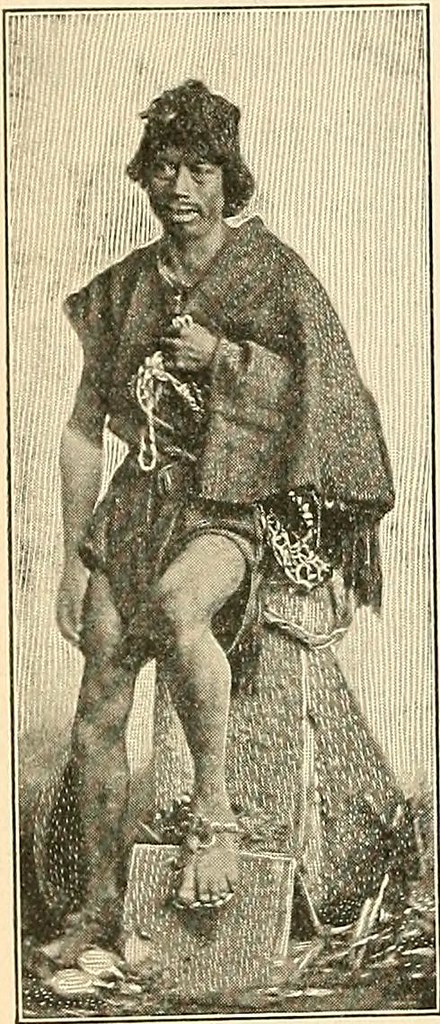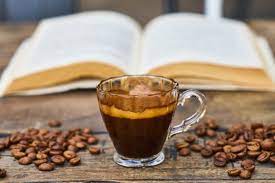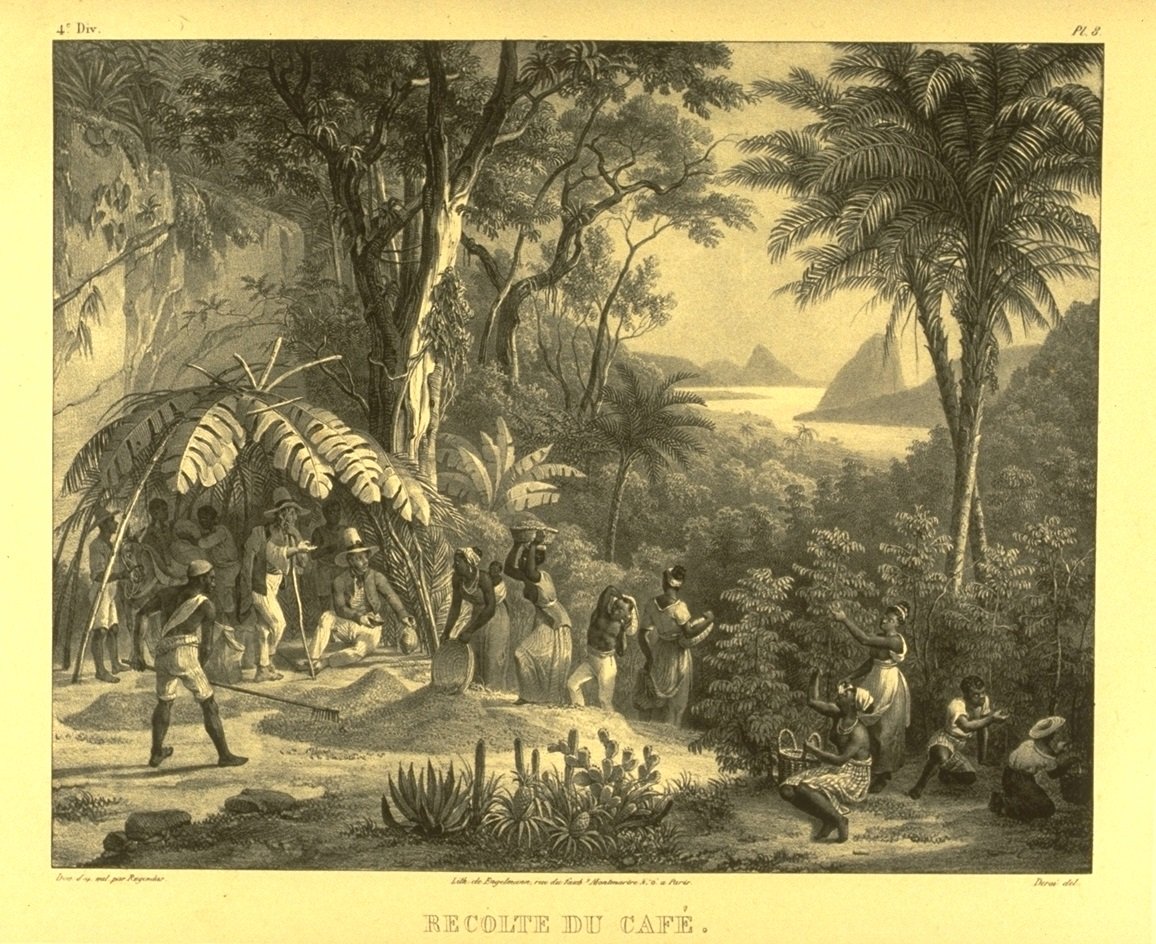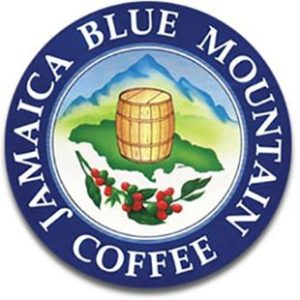From the small South American nation of Peru comes one of the most delicious and well-known coffees in the world.
It is one of the best when it comes to single-origin coffee. Single-origin means that Peruvian beans trace back to where they were grown and sign this high-quality coffee.
There are so many aspects of Peruvian coffee that make it stand out from the rest.
Peru has a long history of coffee farming and is home to some of the world's most experienced coffee farmers.
The beans are handpicked and hand-processed and typically grown on small-scale farms.
But that's not all that makes Peruvian coffee stand out from the rest. The country grows Arabica beans, which are of premium quality compared to Robusta varieties.
Arabica beans grow best at high altitudes, and Peru has a lot of that. The Andes mountains are a large part of Peru's landscape and play a significant role in its coffee bean production.
Machu Picchu, one of the seven wonders of the world, maybe what Peru is best known for. But there are quite a few similarities between this Incan empire and Peruvian coffee.
If you ever hike up to the 7000 ft. altitude of Machu Picchu, you'll be looking at some of the best coffee growing conditions in the world.
Coffee in Peru may be most well known for its organic fair trade certifications.
A Brief Look into Peruvian Coffee History
The coffee industry in Peru dates back a couple hundred years. Explorers first brought coffee to Martinique's island in the Caribbean. After explosive growth, it didn't take long for the coffee to reach Peru.
It's a bit of a mystery how coffee arrived here decades before it did in many Central American countries, even though Central America is much closer to the Caribbean.
The first coffee plant brought to Peru was from a neighboring country, Ecuador. Peru began growing coffee in the mid-1700s.
Production grew in the following years, though most of the coffee produced here was for local consumption.
The country didn't export much coffee at all.
The 1700s and 1800s saw coffee farming, grow steadily, but so did the love for coffee among Peruvians, so exports were meager.

In the late 1800s, there was widespread disease across Asia and Indonesia, a coffee powerhouse at the time.
This spread took a significant toll on the coffee industry across the continent. The global coffee market took a hit as a result. Europeans began looking for other available sources of coffee to satisfy their cravings for this caffeinated drink.
They quickly discovered Peru. In the following years, Europeans made significant investments in further developing Peru's coffee industry.
By the early 1900s, Peru began exporting large amounts of coffee. To address repayment on a defaulted loan between the two countries, England claimed 2 million hectares of coffee growing land in Peru.
The English soon began creating large-scale coffee plantations. Coffee quickly became 60% of Peru's exports.
After the end of the Second World War, England sold its coffee plantations back to Peru. Instead of farming this land as large plantations, Peru redistributed it into small local farms.
The average farm size was and still is only 3 hectares. Thousands of local Peruvians became owners of farms.
Because there were thousands of local farms, each farmer had more autonomy and freedom, but the commercial industry was disjointed. Since the 1960s, co-ops have become increasingly popular.
These organizations' support and knowledge have helped develop organic Peruvian coffees and help make this country a leader in fair trade coffee.
Is Peruvian Coffee Good?
Peruvian coffee is more than just good. It's delicious! If you haven't had the chance to try it, you're in for a treat.
Handpicked with care from small local farmers, you'll almost be able to taste the devotion they put in to create one of the highest quality coffees in the world.
Peru holds its coffee to a high standard. Because of the region's growing conditions, these coffee beans are handpicked and processed by small farms.
With the beautiful environment of Andes mountains and lush rainforests, Peru has attracted many organizations' support. With this support, Peru has become a leader in producing certified organic coffee, and Rainforest Alliance certified coffee.

However, their organic, fair trade coffee isn't the only reason why this coffee makes a better brew. Many small local farmers are part of co-ops that help provide support to these small coffee farms. No wonder this coffee gets such great reviews!
Thanks to the Peruvian coffee industry's work supporting organic, fair-trade, local farms, Peru is the world's largest organic coffee exporter.
Organic, in this case, means that the coffee is free from any pesticides, so there is less harm done to the environment.
Because of fair trade wages, a female cooperative called Café Femenino started to help empower women to become coffee farmers, pushing for gender equality in pay.
While Peruvian coffee beans may be a bit more expensive than your average Arabica blend, paying a fair price helps improve hard-working farmers' quality of life.
What does it Taste Like?
The taste of Peruvian coffee is slightly different based on the region where it is grown.
Did You Know? In the Andes' Cusco region, the high altitude growing conditions give the coffee a bright acidity and creamy sweetness.
You'll also find floral notes. Enthusiasts flock to this aromatic specialty coffee, often described as nutty, with honey and chocolate flavors.
The Cajamarca region is at a lower altitude compared to the Cusco and Chanchamayo regions. Coffee grown here has a mild acidity and medium body.
Subtle floral notes with a hint of nuts and fruit are what you can expect. It's best as a medium roast, as this brings out the beans' full flavor and body.
Regardless of the region, Peruvian coffee has crisp acidity and a medium body.
Its complex flavor is sweet and creamy, with a floral aroma and fruity hints.

Where are Peruvian Coffee Beans Grown?
Peru has a diverse natural environment. With hot, low-lying coastal regions to high altitude cloud forests of the Andes, there are so many unique regions. Only part of Peru is well equipped to grow coffee, though.
Three regions in the country are known for their coffee production. To the north, there is the Cajamarca region.
The central Chanchamayo Valley region is best known for its dense cloud forests, which produce cool, wet conditions. The third region is the southern highlands near

The Cajamarca region is known for a large coffee cup. The Cenfrocafe co-op is the best known cooperative in the country and has over 2000 current farm members.
It even provides short-term credit to local coffee farmers to help with the harvest or buying materials.
The southern highlands near Cuzco produce some of the best coffee on the planet, including the award-winning Quechua brand.
Even though the tour of Machu Picchu may outshine Cuzco, one cannot overlook its coffee production.
Equator Coffee
Peru sits just south of the equator. It is right in the middle of the world's "coffee belt." This coffee belt is a region of the world near the equator known for its favorable coffee growing conditions.
Luckily for Peru, it falls right in the middle of this coffee belt.
The hot, humid conditions of the equator provide ideal growing conditions for coffee. Combining its location near the equator with the Andes mountains' high altitude gives Peru some of the best growing conditions on the planet.
The world's largest coffee producers all lie near the equator. Brazil (adjacent to Peru), the world's largest coffee producer, lies just south of the equator.
In contrast, Vietnam, the world's second-largest coffee producing country, sits slightly north of it.
Colombia and Indonesia come in at 3rd and 4th and lie directly on the equator.Given Peru's similar location to coffee giants Brazil and Colombia.
It's no surprise this little country still makes it the top 10 largest coffee producers globally.

What are the Best Peruvian Coffees?
Many co-ops will produce incredible coffees using a blend of their local members' coffee beans. Some of these are even certified organic or fair trade.
I recommend buying a bag of whole bean coffee so you can make freshly ground coffee yourself. If you don't have a coffee grinder, you can purchase many coffees already ground.
Some know Chanchamayo coffee as the premier coffee beans of Peru because of the unique cloud forest conditions it's grown in.
It's known for its floral tones, and it has the signature sweet aroma and complex fruit notes. To some, it is the best Peruvian coffee. These beans come freshly roasted and are a medium roast.
Java Trading Company: Chanchamayo Coffee

Pros
It would not be a list of the best Peruvian coffee beans without mentioning Cenfrocafe Coffee. The coffee produced by this co-op is 100% fair trade and almost entirely certified as organic.
With love and care put into every coffee bean from this cooperative, you know you'll be getting the best possible fresh roasted coffee beans produced.
If you're environmentally conscious, you may want to look for Cajamarca coffee roasted RhoadsRhoast Coffee. It is available as whole bean coffee, so you'll have to grind the beans yourself.
These beans come from all over the Cajamarca region and are all fair trade and organic. It's another medium roast and has sweet notes of chocolate and almonds. It's also known for its mild, fruity acidity.
Do you prefer a light or dark roast instead of a medium roast? While most Peruvian coffee results as a medium roast, you can find coffee beans roasted to your liking too.
Cafe Altura Peruvian Dark Roast is a favorite if you prefer a darker roast. A dark roast gives a smooth and creamy body to the coffee.
Light roasts are available, which help bring out the coffee's sweet, fruity tones with a lighter body.
Because so many of the best Peru coffee brands are certified fair trade and organic, it's not hard to find a reputable brand. You may want to consider purchasing directly from a cooperative.
That way, you know you'll be supporting local farmers. While organic beans may cost more, you're helping preserve the beautiful Andes and Amazon rainforest.
How to Prepare Peruvian Coffee
The coffee of Peru has bright yet mild flavors and is well suited for many brewing methods.
The French press is a favorite brewing method. Immersing the ground coffee in hot water helps extract more of the coffee beans' oils and flavors, giving it a rich body.
It's one of the favorite brewing methods for this complex coffee. If you have whole beans, grind them coarsely for this method.
If you're a fan of pour-over coffee, you'll be an even bigger fan of Peruvian coffee. The benefit of pour-over is that it gives you more control every time you brew it, so you can let the coffee bloom and bring out all of the beautiful flavors of the roast.
Expect complex flavors of chocolate, fruit, and nuts for this highly aromatic brew. I'd recommend pouring over instead of a drip coffee, so you get more control.
Lastly, we can't forget about espresso. I'd recommend a fine ground coffee for this method.
Purchasing whole bean coffee to grind yourself is better if you want to have a fresh flavor. Expect a rich, smooth brew with a good body if you opt for an espresso.
How does Peruvian coffee rank among the world's best coffees?
Peruvian coffee may be the new kid on the block when it comes to specialty coffee. With the relatively recent investments in coffee cooperatives and fair trade and organic certification, it's now one of the best single-origin coffees out there.
So is Peru coffee the best coffee in the world? Well,
Did You Know? according to the 2018 Global Specialty Coffee Expo, Seattle, it might just be. Peruvian coffee won the top spot when it came to "best quality coffee."
If you haven't tried Peruvian coffee yet, you'll want to get your hands on a freshly roasted cup of it. After a single sip, you'll know why it gets such great reviews.
